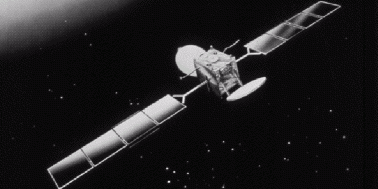A 'New Path' to Meet the U.S. Military's Satellite Needs
The Defense Department has reached a turning point in satellite communications acquisition and deployment, writes guest blogger Rebecca M. Cowen-Hirsch.
The Defense Department has reached a turning point in satellite communications (SATCOM) acquisition and deployment. On one hand, it is transitioning SATCOM from narrowband to wideband to keep up with ever-accumulating voice, video and data consumption. On the other, the budget forecast for the foreseeable future does not cover the replacement or addition of military satellite communications (MILSATCOM) systems, except for those within existing programs of record.
To add to the challenge, MILSATCOM capacity is insufficient, and the SATCOM acquisition model has become too fragmented and dysfunctional to satisfy current demands. In an age of globalized, asymmetrical warfare, we cannot afford to send U.S. forces into the field without the best capacity, reliability and capabilities.
Acknowledging this, top commanders have rallied around proposals for a partnership with commercial SATCOM (COMSATCOM) providers to pave the way for what we call “SATCOM as a service.” This robust and global approach integrates complex solutions within an end-to-end managed services architecture, creating greater suitability, security, functionality, flexibility and resiliency. With this, troops access satellite on-demand with seamless availability of transponders, equipment terminals, backhaul, capacity and features.
SATCOM as a service also is ideal for the mobile age; users travel from one location to another and simply “plug in” for instant connectivity. All they need is an IP address. In this sense, SATCOM as a service is about ubiquity, an anytime and anyplace state of access through which users leverage commercial and MILSATCOM resources in a complementary model. Troops depend upon mobile, data-intensive applications, such as streaming video for intelligence, surveillance and reconnaissance. They do not care whether the technology is supplied by the DOD or a commercial provider. They only want results.
A number of developments over the past year speak to positive, forward movement in this direction:
- In August 2014, the DOD indicated in its Satellite Communications Strategy Report that the military consumes 10 times more bandwidth than in 2001, and that a five-year plan should include a greater commercial presence within a more centralized structure. The department’s “decentralized approach impedes centralized, multi-year acquisition and hinders the DOD’s ability to manage MILSATCOM and commercial SATCOM as a holistic capability to best support the warfighter.” The report notes that the DOD might have to adopt a “shared resource” usage model.
- In April, Gen. John Hyten, USAF, commander of U.S. Air Force Space Command, called for a revamped acquisition model in order to buy SATCOM correctly. “When we have soldiers, sailors, airmen and Marines deployed in harm’s way all around the world, we have to make sure that our number-one priority is to get them everything they need, every minute of the day because everything that they do is critically dependent on space,” he stated at the 31st Space Symposium.
- At the same time, the House Armed Services Committee’s Satellite Communications Provisions in the National Defense Authorization Act for Fiscal 2016 report recommends funding $79.5 million for a pilot program to buy commercial satellite communications. The report advocates granting authority for the DOD to enter into five-year maximum contracts to lease COMSATCOM to lower taxpayer costs, develop greater assurances in meeting military requirements and partner with industry providers.
- In May, the General Services Administration (GSA) indicated it wants to augment SATCOM acquisition strategies while addressing growing complexities by revising the existing Custom SATCOM Solutions (CS2) contract. The subsequent GSA procurement, Complex Commercial Satellite Communications (CS3) is expected to expand the use of managed services, so the government can more cost-effectively obtain end-to-end COMSATCOM.
- In July, the U.S. Government Accountability Office (GAO) released its Defense Satellite Communications report, concluding the DOD’s efforts to improve procurement of MILSATCOM and COMSATCOM remain hampered by two long-standing challenges—a lack of knowledge of what the military spends on COMSATCOM, and a resistance to the centralized management of SATCOM procurement. The GAO recommends the DOD analyze spending to identify procurement inefficiencies, require the Defense Information Systems Agency to acquire all commercial SATCOM and assess whether greater centralization of COMSATCOM would benefit the DOD. The department concurred with these recommendations, according to the report.
SATCOM as a service boosts innovation and capabilities and, better yet, does so with no infrastructure or research and development (R&D) investment by the government. Already, commercial providers invest R&D funding and internal talent pursing innovation and affordability. Users turn to MILSATCOM for core requirements, then integrate industry technologies to fill the gaps to achieve absolute protection, resiliency and global portability.
As Gen. Hyten and other military leaders have expressed, there is a sense of urgency to explore a "new path" for satellite acquisition. Fortunately, there is an existing and highly actionable map for this path. Collaborating with industry providers as partners, the DOD can take advantage of the best that both MILSATCOM and COMSATCOM have to offer, positioning U.S. military for mission success no matter where they are, or what their mission requires.
Rebecca M. Cowen-Hirsch is Inmarsat’s senior vice president for government policy, strategy and outreach in the U.S. Government Business Unit, based in Washington, D.C.





Comment
Interesting. It's amazing
Interesting. It's amazing seeing how satellite technology has changed and where it's going in the future. Thanks for sharing this!
Comments